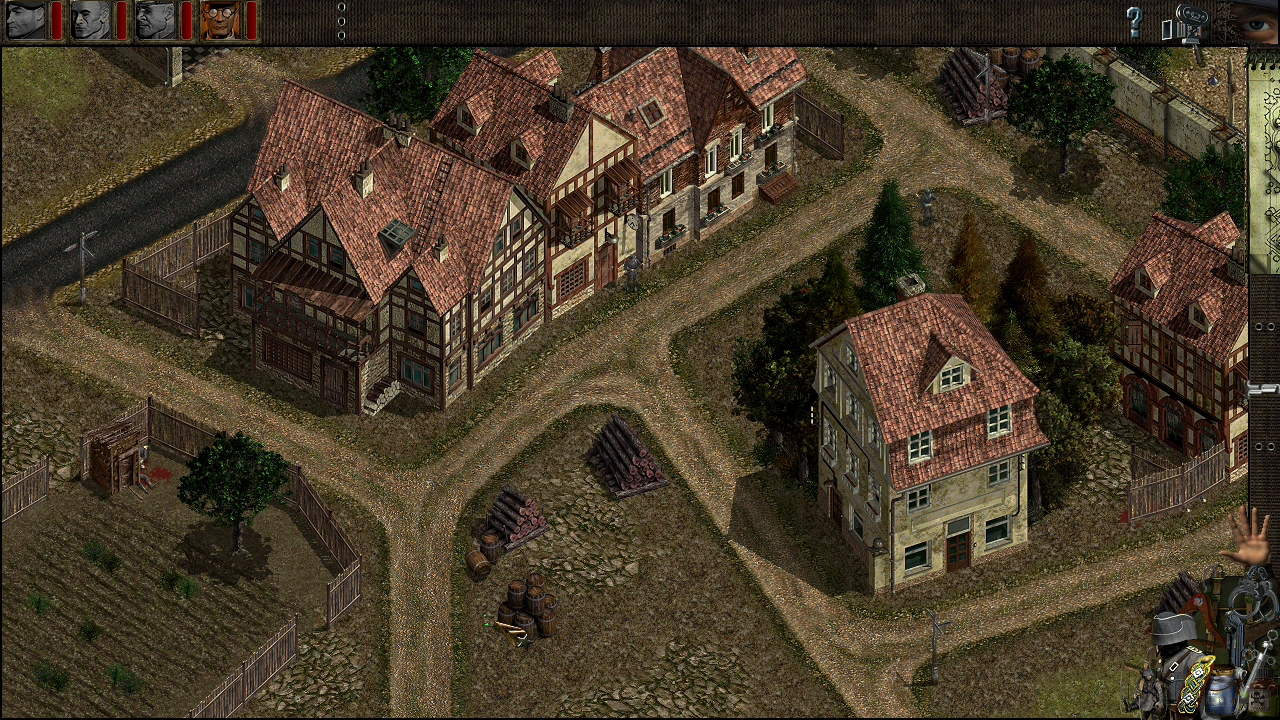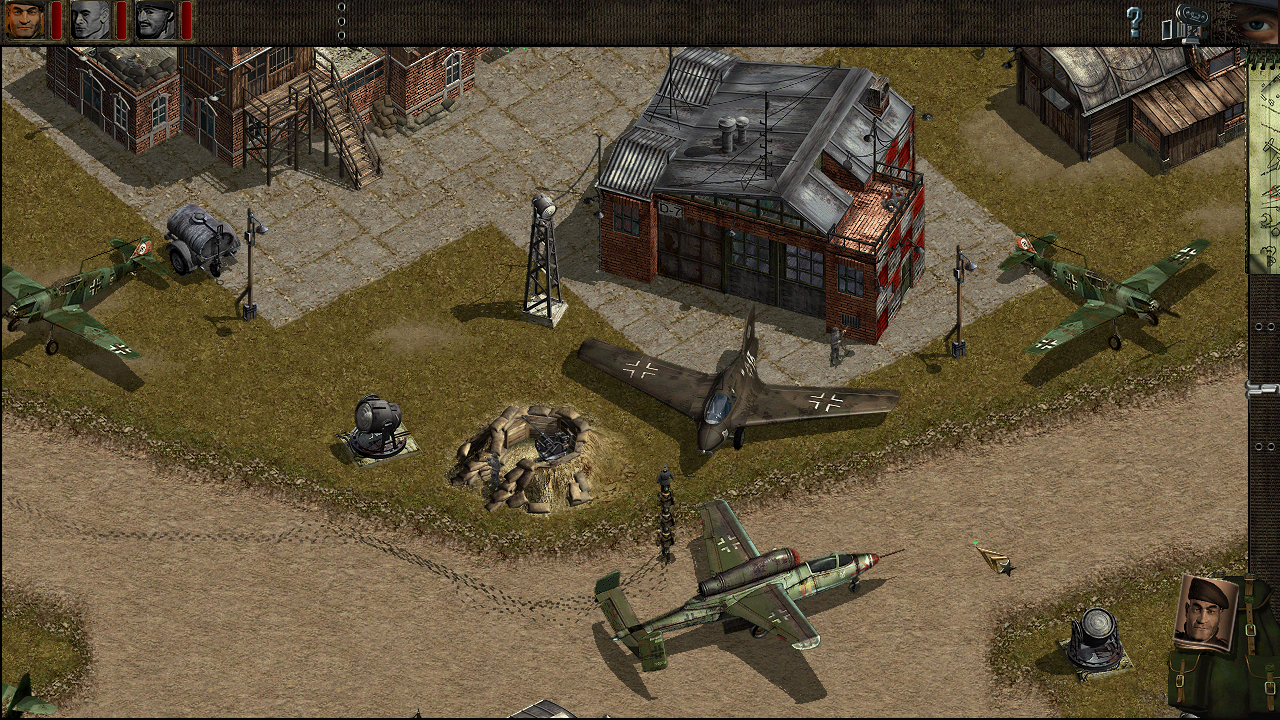|
The unexpected and and immense success of Commandos: Behind Enemy Lines meant that the development of a follow-up was an obviously good move. While a sequel would eventually materialise in 2001, the first step for Pyro Studios and publisher Eidos was to design a standalone expansion: 1999's Beyond the Call of Duty. Introducing eight new missions, superior graphics, more interactive environments, and new skills which slightly balance out the responsibilities of the characters, Beyond the Call of Duty is an excellent expansion set that should be seen as integral to the main game. The eight missions are set in diverse locations including Germany, Crete, the Channel Islands and Yugoslavia and chronologically, are interspersed between the 20 missions of the main game. It's clear that Pyro made a special effort to introduce more intriguing locales for the expansion - a zoo in Belgrade, complete with lions and ostriches, is the clearest example. In contrast to Behind Enemy Lines, there are two difficulty settings. On easy, the missions are usually simpler to accomplish than the main game. On hard, they can be significantly tougher. The expansion also directly addresses the criticisms levelled at the original game, mostly with success. There is music during gameplay, and the maps are less static - birds fly overhead, certain missions feature civilian NPCs, and the Green Beret can move certain new objects like small rail cars or fuel containers. Also welcome, but not quite so successful, are Pyro's efforts to even out the abilities of the six commandos. In the main game, the Green Beret was by far and away the most useful and most able to act independently. In Beyond the Call of Duty, all characters gain additional distraction techniques. These are the ability to throw stones (which cause sentries to look briefly in a particular direction) and cigarette packets (which cause sentries to move out of position). These options are very useful (and have been replicated in subsequent Commandos-style games) but they don't challenge the basic hierarchy of character usefulness - nor do other character-specific additions. The Driver, always the least useful character, gains a rifle in the expansion which like his sub-machinegun, can almost never be used. In mission 7, the Green Beret and the Spy are captured and the Marine and Sapper must rescue them. It's a fun opportunity to use these two characters extensively, but it's obvious how Pyro designed the mission around them - particularly their inability to move and hide dead bodies. Playing Commandos 20 years on from its release, it is interesting to see how fully-formed its new genre was. Subsequent games made by other developers lifted almost every element and could find few enhancements of their own. Beyond the Call of Duty is significant for adding even more features which would be considered essential by later developers, right up to Mimimi's superb Shadow Tactics in 2016.
With more diverse and interactive missions and new easy and hard difficulty settings that make gameplay more accessible and challenging respectively, Beyond the Call of Duty is an essential part of the Commandos legacy and absolutely worth the time of any player who has conquered the original game.
0 Comments
Your comment will be posted after it is approved.
Leave a Reply. |
About
Exploring classic science fiction, with a focus on the 1950s to the 1990s. Also contributing to Entertainium, where I regularly review new games. Categories
All
|



